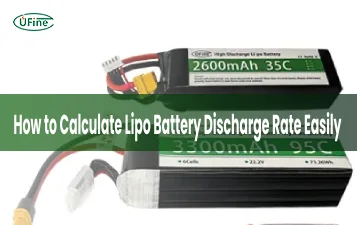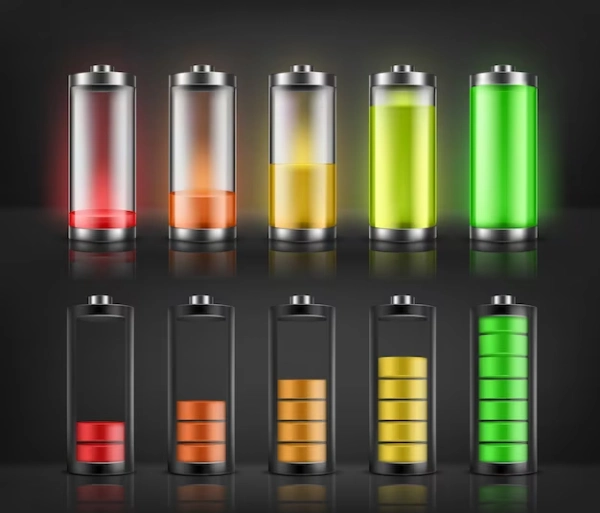Lithium batteries are a kind of battery commonly used in people’s daily lives. Lithium battery cycle life is an important indicator to measure the quality of lithium batteries. The manufacturing process, materials, and usage of lithium-ion batteries determine the length of their life cycle. The following article lists seven factors that may affect the cycle life of lithium batteries during production. I hope it will be helpful to everyone.
Part 1. Factors affecting the cycle life of lithium batteries
1. Types of lithium battery materials
Material selection is the first factor that affects the lithium battery’s cycle life. Suppose materials with poor cycle life are selected. In that case, no matter how reasonable the process is and how perfect manufacturing is, the cycle of battery cells will inevitably not be guaranteed. By choosing better materials, even if there are problems with subsequent production, the cycle life will not be too bad.
From a material perspective, the cycle life of a lithium battery cycle life is determined by the worst cycle performance after matching the positive electrode and electrolyte or the cycle performance after matching the negative electrode and electrolyte.
The cycle performance of the material is poor. On the one hand, it may be that the crystal structure changes too quickly during the cycle, making it impossible to continue to complete lithium insertion and delithiation. On the other hand, it may be that the active material and the corresponding electrolyte cannot form a dense and uniform SEI film, causing premature side reactions between the active material and the electrolyte, causing the electrolyte to be consumed too quickly and affecting the battery cycle life.
When designing the battery core, if one pole is confirmed to use a material with poor cycle performance, selecting a material with better cycle performance for the other pole is unnecessary. This avoids material waste.
2. Compaction of positive and negative poles
The positive and negative electrodes are compacted too high, although the energy density of the battery core can be increased. But it will also reduce the recycling performance of the material to a certain extent. From a theoretical analysis, the greater the compaction, the greater the structural damage to the material. The material’s structure is the basis for ensuring that lithium-ion batteries can be recycled. In addition, it is difficult to ensure a high liquid retention capacity for batteries with higher positive and negative electrode compaction. The liquid retention capacity is the basis for the lithium battery cell to complete normal cycles or multiple deep cycles.
3. Moisture
Excessive moisture will cause side reactions with the positive and negative active materials, destroy their structure, and affect the life cycle. At the same time, too much moisture is not conducive to forming SEI film. However, while trace amounts of water are difficult to remove, trace amounts of water can also ensure the performance of the battery core to a certain extent.
4. Coating film density
Considering the effect of membrane density on cycling alone is an almost impossible task. Inconsistent film density either brings about differences in lithium battery capacity or in the number of cell winding or lamination layers. Reducing the membrane density is equivalent to adding one or more layers of winding or lamination for batteries of the same model, capacity, and material. The corresponding increased separator can absorb more electrolytes to ensure circulation.
Thinner film density can increase the battery core’s rate performance. It will also be easier to bake and remove water from the pole pieces and bare battery cells. Of course, the error when coating with a film density that is too thin may be more difficult to control. Large particles in the active material may also hurt coating and rolling. More layers mean more foils and membranes. This, in turn, means higher costs and lower energy density. Therefore, a balanced consideration is also required when evaluating.
5. Excessive negative electrode
In addition to the impact of the first irreversible capacity and the density deviation of the coating film, the cause of excessive negative electrode needs to be considered, and the impact on cycle performance is also a consideration. For the lithium cobalt oxide plus graphite system, it is common for the negative electrode graphite to become the “short board” in the cycle process.
If the negative electrode is excessive and insufficient, the battery may not precipitate lithium before cycling. However, after hundreds of cycles, the positive electrode structure changes little. The negative electrode structure is severely damaged and cannot fully receive the lithium ions provided by the positive electrode, thereby precipitating lithium and causing a premature decline in capacity.
6. Electrolyte volume
There are three main reasons why insufficient electrolyte volume affects lithium battery cycle life.
First, the amount of liquid injected is insufficient.
The second is that although the amount of liquid injected is sufficient, the aging time is insufficient, or the positive and negative electrodes are not fully immersed due to excessive compaction and other reasons.
The third is that the electrolyte inside the battery cell is consumed as the cycle proceeds.
Regarding the third point, regarding the matching of positive and negative electrodes, especially the negative electrode and the electrolyte, the microscopic manifestation is the formation of dense and stable SEI. The performance visible to the right eye is the consumption rate of electrolytes during the circulation process. On the one hand, the incomplete SEI film cannot effectively prevent side reactions between the negative electrode and the electrolyte, thereby consuming the electrolyte. On the one hand, in the defective parts of the SEI film, the SEI film will be regenerated as the cycle proceeds, thereby consuming the reversible lithium source and electrolyte. Whether it is a battery cell that has been cycled hundreds or even thousands of times or a lithium battery cell that has been cycled dozens of times, if the electrolyte is sufficient before the cycle and has been consumed after the cycle, it is likely to be sufficient to increase the electrolyte reserve. Improve lithium battery cycle life to a certain extent.
7. Objective conditions for testing
During the lithium battery testing process, external factors include charge and discharge rate, cut-off voltage, charge cut-off current, overcharge and over-discharge, temperature of the test room, sudden interruption during the test process, contact internal resistance between the test point and the battery cell, etc. Less impact on lithium battery cycle life test results.
In addition, different materials have different sensitivity to the above-mentioned objective factors. Unify testing standards and understand common and important material properties.
Part 2. Summary
Like the wooden barrel principle, among the many factors that affect lithium battery cycle life, the final decisive factor is the shortest link among many factors. At the same time, there are also interactions between these influencing factors. Higher cycles often mean lower energy density under the same materials and lithium battery manufacturing capabilities. As a professional lithium battery manufacturer, Ufine has been committed to meeting customers’ various needs for lithium batteries and ensuring the consistency of lithium battery cells.
FAQs
-
What is the life expectancy of lithium batteries?
The life expectancy of lithium batteries can vary depending on factors such as usage patterns, charging/discharging conditions, and quality. On average, lithium batteries can last several years, typically ranging from 3 to 10 years. -
Can a lithium-ion battery last ten years?
A well-maintained lithium-ion battery has the potential to last up to 10 years. Still, it depends on usage, charging/discharging practices, and environmental conditions. Regular maintenance and proper care can help extend the battery’s lifespan. -
How many times can you cycle a lithium battery?
Lithium batteries can typically undergo hundreds to thousands of charge/discharge cycles, depending on factors such as depth of discharge, charging/discharging rates, and operating conditions. -
How long do lithium-ion deep-cycle batteries last?
The lifespan of lithium-ion deep-cycle batteries can vary depending on factors like depth of discharge, charging/discharging patterns, and operating conditions. On average, they can last several years, ranging from 3 to 10 years or more with proper care. -
What is the lithium-ion battery life cycle?
Lithium battery cycle life refers to the number of charge and discharge cycles the battery can withstand before the battery capacity decays to a certain specified value under certain charge and discharge standards. One cycle refers to one full charge and one full discharge.
Related Tags:
More Articles

LiPo Battery Discharge Rate Guide & Calculation Tips
Understand LiPo battery discharge rates, C-ratings, and how to calculate max current. Essential guide for RC, drones, and electronics users.
High‑Capacity 3S LiPo Batteries: 5000 mAh vs. 10000 mAh
Compare 3S LiPo 5000mAh vs 10000mAh batteries by weight, power, and use. Find the best fit for your drone, RC car, or boat setup.
Top 5 Applications for Small 3S LiPo Batteries
Small 3S LiPo batteries power drones, RC gear, wearables, and robotics with high energy and low weight. Making them ideal for compact electronics projects.
Building and Charging Your Own 3S LiPo Pack: A Step‑by‑Step Guide
Learn how to build, balance, and charge a 3S LiPo battery pack safely at home with this complete DIY guide for hobbyists and beginners.
How to Choose the Right LiPo Battery Plug Type?
Discover the best LiPo battery plug types, how to choose them, and expert tips for safe usage, soldering, and maintenance.




